Knowing how to choose a bike appropriately is crucial, as selecting the perfect bike is not just about the ride but the journey ahead. The right bicycle can transform your travel experience, offering a mode of transportation and a way to enhance your fitness, explore new terrains, and enjoy the freedom of the open road.
With myriad options available, from road racers to mountain marauders, understanding the key factors — such as frame size, wheel type, and gear system — is crucial. But how to choose a bike?
In this guide, we will go through the essentials to ensure you make an informed decision that aligns with your cycling aspirations and lifestyle. Whether for commuting, leisure, or sport, the quest for the ideal bike begins here.
Figure Out Your Bike Type
There are various bicycle types to choose from; below are the most popular bicycle types:
Road Bikes
A road bike is designed to accelerate quickly and efficiently on paved surfaces. With lightweight frames, thin tires, and a geometry that promotes an aerodynamic posture, they are perfect for cyclists seeking agility and pace.
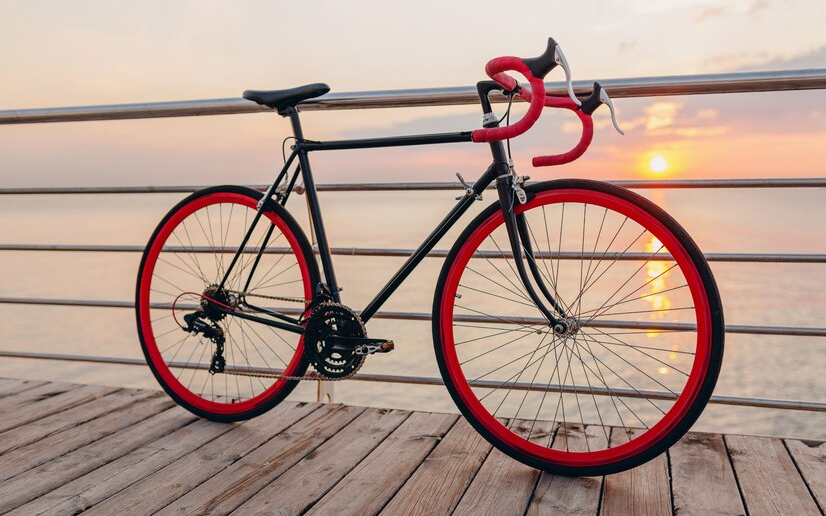
Pros
- Enhanced speed
- Lightweight build
- Aerodynamic design
Cons
- Less comfortable for casual rides
- Not suitable for rough terrains
- Higher maintenance due to delicate components
These bikes offer a swift commuting option, ideal for fitness enthusiasts and long-distance riders. They cater to those who prioritize performance and speed in their cycling experience.
Mountain Bikes
Mountain bikes are engineered for rugged terrain and challenging trails. They boast sturdy frames, wide tires, and advanced suspension systems to absorb shocks. Ideal for adventurers and off-road enthusiasts, these bikes enhance outdoor exploration.
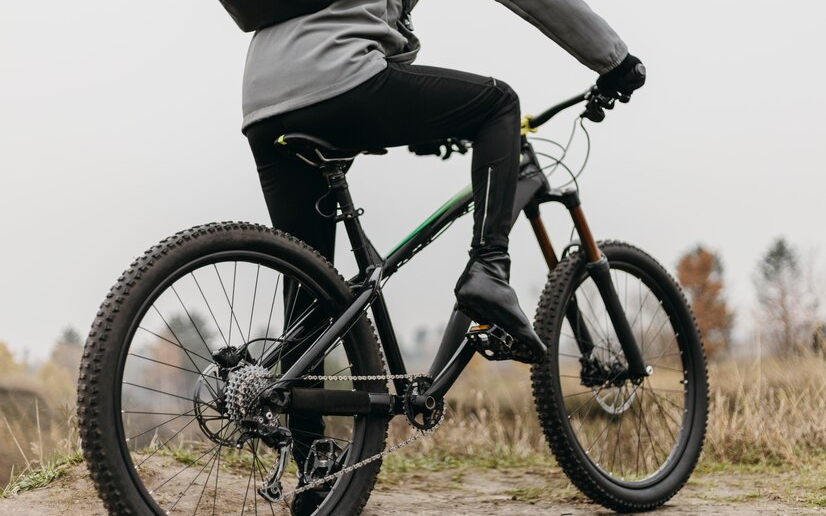
Pros
- Durable construction
- Superior traction
- Versatile across various landscapes
Cons
- Heavier than road bikes
- Requires more effort on paved roads
- Can be costly with high-end models
Mountain bikes are the go-to choice for those seeking thrilling rides and the freedom to traverse diverse terrains.
Hybrid Bikes
Hybrid bikes blend the comfort of a city bicycle with the resilience of a mountain bike, making them versatile for various terrains. They feature medium-width tires and comfortable seating, which are suitable for casual riders and commuters.
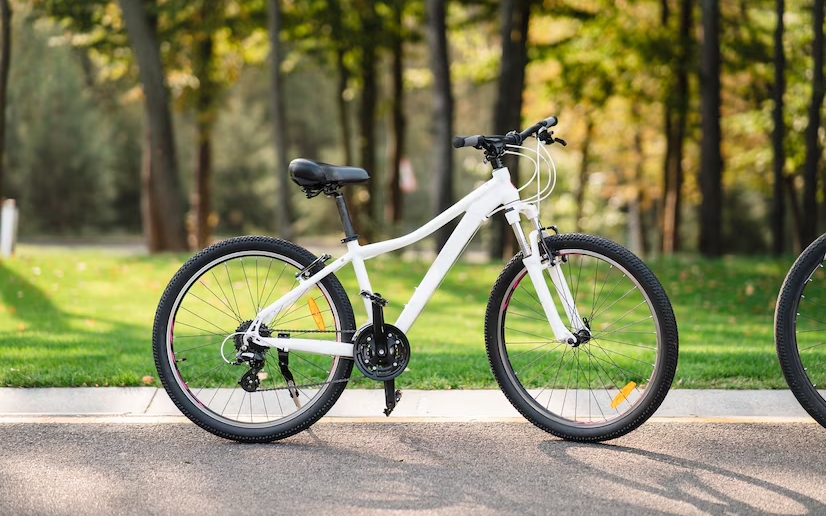
Pros
- Flexibility in different settings
- Comfortable for long distances
- Lower maintenance than specialized bikes
Cons
- Not as fast as road bikes
- Less rugged than mountain bikes
Hybrid bikes serve those who desire a balance between speed and durability, offering a practical solution for everyday cycling needs.
Commuter Bikes
Commuter bikes are tailored for urban environments, offering a reliable and eco-friendly mode of transportation. Characterized by their durable design, comfortable seating, and provision for carrying cargo, they suit daily travelers and city dwellers.
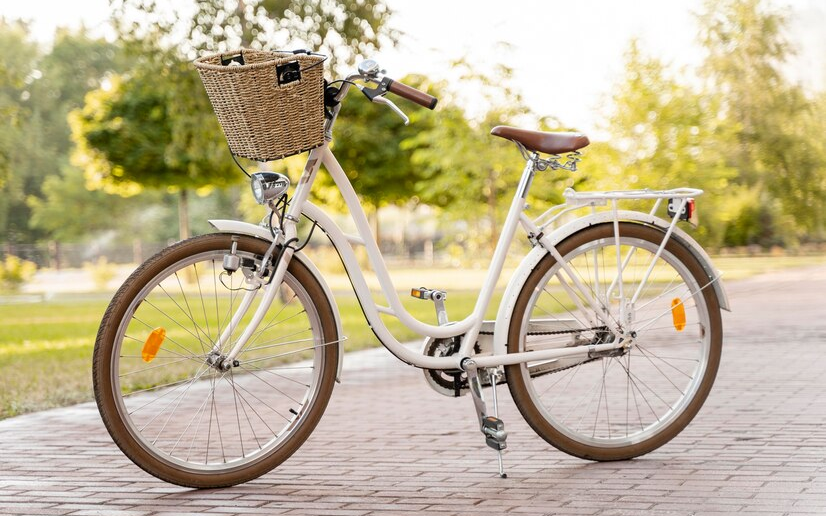
Pros
- Cost-effective commuting
- Robust frame for daily use
- Features like fenders and racks enhance utility
Cons
- Generally heavier than road bikes
- Not as efficient for long-distance travel
- Limited off-road capabilities
These bikes are an excellent choice for those seeking a practical and sustainable travel option for their daily urban journeys.
Electric Bikes
Electric bikes, known for their integrated electric motors, boost natural pedaling, making them ideal for easily overcoming hills and long distances. They cater to those who seek a sweat-free commute or require assistance due to physical constraints.

Pros
- Assists with challenging terrain
- Reduces physical strain
- Eco-friendly alternative to vehicles
Cons
- Heavier than traditional bikes
- Limited range on a single charge
- Higher initial investment
Electric bikes combine technology and tradition, providing a modern twist to cycling and expanding the possibilities for riders of all levels.
How to Choose a Bike? Key Features to Consider
You should consider these factors to select a bicycle that best fits your requirements.
Frame Material
The frame material is crucial when selecting a bike as it influences the weight, durability, and ride quality. Aluminum frames are lightweight and affordable, making them popular for casual and beginner riders.
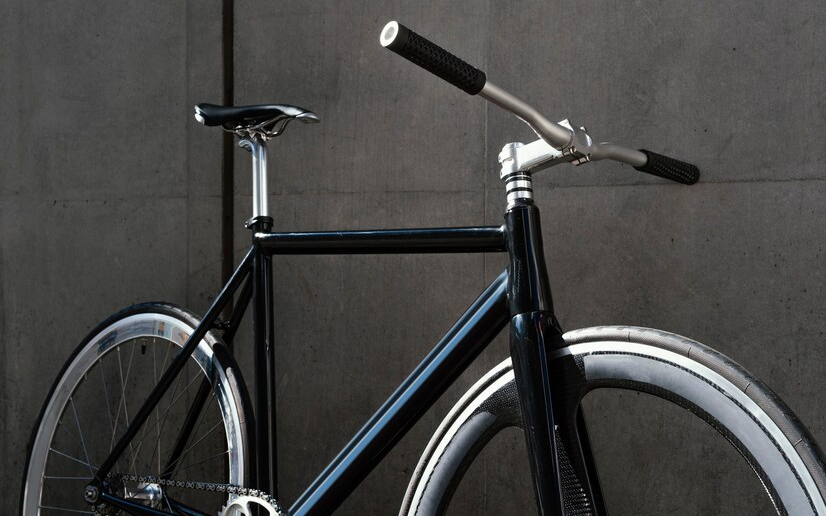
Although pricier, carbon frames provide excellent stiffness-to-weight ratio and vibration damping, which are beneficial for severe cyclists seeking performance. Steel, known for its strength and compliance, offers a comfortable ride, especially for long distances, but tends to be heavier.
Bike Size & Fit
Bike size and fit are paramount for comfort and efficiency. A properly sized bicycle will align with the rider’s height and leg length, ensuring a comfortable reach to the handlebars and pedals.
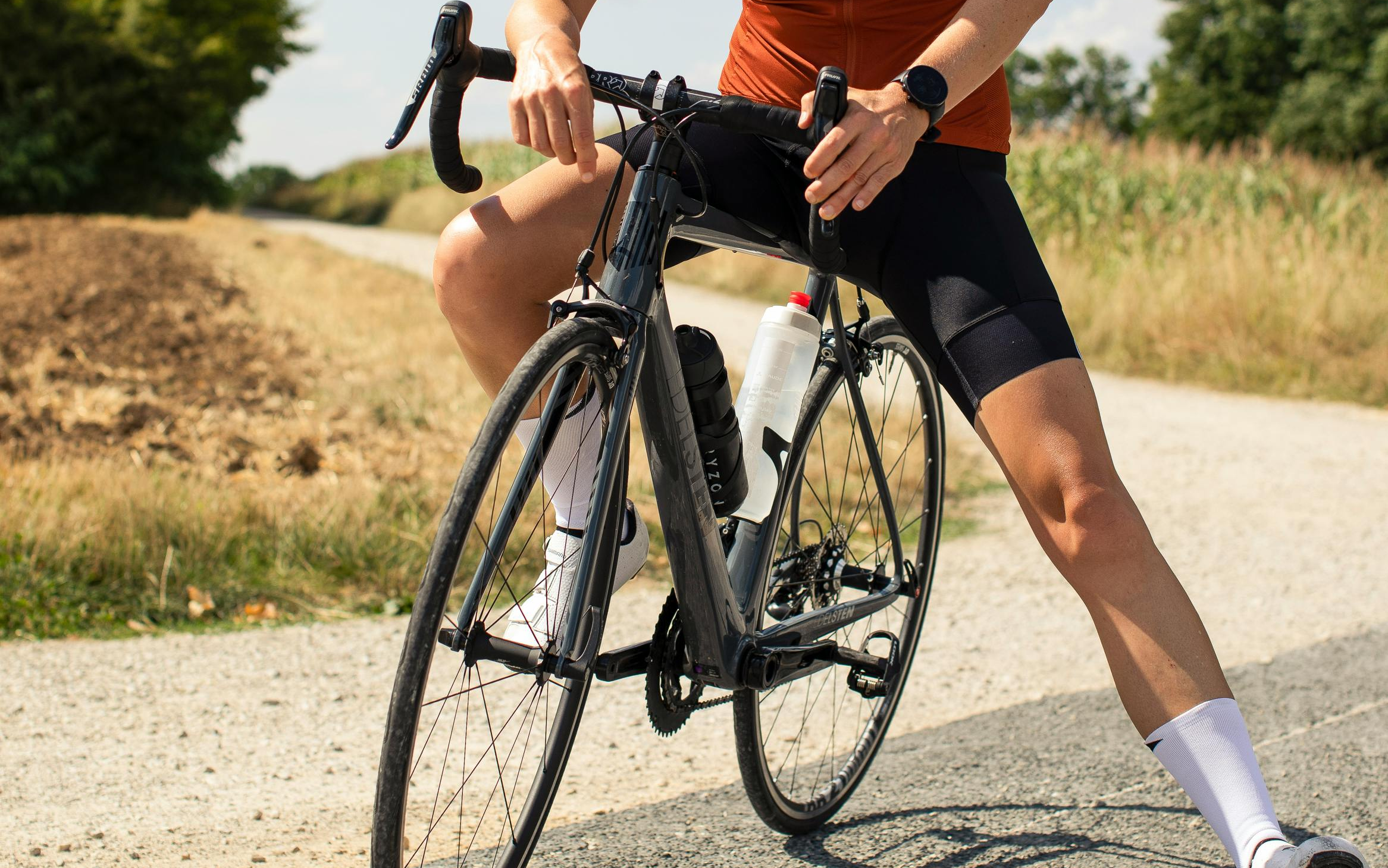
The right fit prevents strain and injury while enhancing the bike’s responsiveness. To find the ideal bike size, consult sizing charts or seek professional fitting services.
Wheel Size
Wheel size affects the bike’s handling and terrain compatibility. Standard road bikes typically feature 700c wheels that balance speed and agility well.
Mountain bikes may have 29-inch wheels for better obstacle rollover and stability or 27.5-inch wheels for quicker acceleration and maneuverability. Smaller wheel sizes, like 650b, are often found on touring or gravel bikes for their strength and comfort on varied surfaces.
Suspension System
The suspension system of a bicycle is essential for comfort and control, especially on uneven terrain. Full suspension bikes absorb impacts with front and rear shocks and provide better traction, making them ideal for mountain biking.
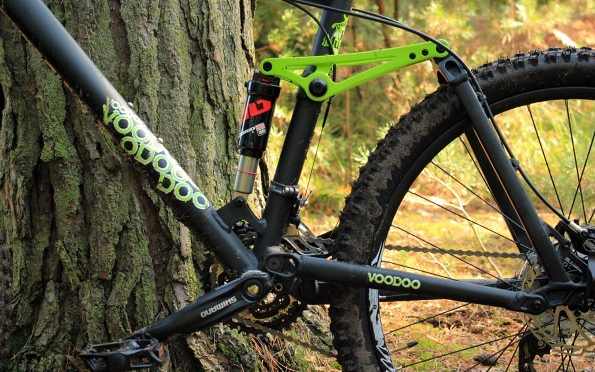
Hardtail bikes, with only front suspension, are lighter and more efficient on smoother trails or cross-country riding. No suspension or ‘rigid’ bikes offer a direct connection to the trail and are more straightforward to maintain.
Gearing
Gearing on a bike can significantly affect the riding experience. Bikes with a wide range of gears are better for varied terrain, allowing for easy pedaling uphill and efficiency on flat ground.
Single-speed bikes, which have only one gear, are valued for their simplicity and reliability, especially in urban settings.
Brakes
Brakes are a critical safety feature, and the choice between rim and disc brakes is significant. Rim brakes are more common on entry-level bikes and work by applying pressure to the wheel’s rim.

They are lighter and easier to maintain but less effective in wet or muddy conditions. Disc brakes, which apply pressure to a rotor attached to the wheel hub, provide more consistent stopping power and are better for off-road and all-weather riding.
Choose the Right Bike Type Based on Your Needs
The next step is to learn how to choose a bike for beginners, assess your primary biking environment, identify your goals, and consider your experience level. For urban settings, a road or hybrid bicycle offers speed and agility amidst traffic.

If trails are your mainstay, a mountain bike with robust suspension will navigate rough terrains. A gravel bike provides versatility for mixed environments.
Your biking goals also play a role; commuting demands reliability and comfort, fitness requires a bicycle that can maintain a consistent pace, and adventure seekers might opt for a bicycle that can handle diverse conditions.
Lastly, your experience level matters; beginners may benefit from a user-friendly bike with straightforward mechanics, while seasoned cyclists might look for advanced features like fine-tuned gear systems.
Ultimately, the right cycle marries the environment, purpose, and rider skill to create an enjoyable, efficient biking experience.
Calculate How Much You Want to Spend
When budgeting for a bike, consider the diverse price ranges, which vary based on type and quality. Entry-level road bikes start around $500, while high-end models can exceed $2000, reflecting the cost-to-quality ratio of materials, components, and technology.

Mountain bikes range from $600 for basic models to over $2500 for advanced setups. Hybrid and commuter bikes are typically priced between $300 and $1000 and offer practicality for everyday use.
To find value, research and compare bikes within your budget, read reviews, and test-ride different models. Look for sales or models from previous years that offer the same performance at a reduced cost.
Investing more initially can lead to long-term savings, with less need for repairs and upgrades. Ultimately, align your spending with your cycling goals to ensure you get a bicycle that meets your needs without overspending.
Where to Buy a Bike?
Purchasing a bicycle is a significant decision, and where you buy it can be as important as the bike itself. Local bike shops offer personalized service, with experts who can advise on the best type and fit for your needs.
They often provide post-purchase maintenance and adjustments, which are invaluable for keeping your bicycle in top condition. Online retailers may offer a broader selection and competitive pricing but need more personalized service from local shops.

Professional fitting services, available at many local shops, ensure your bike is tailored to your body, enhancing comfort and performance. Second-hand bikes can be cost-effective but come with risks, such as potential hidden damage.
It’s crucial to have a used bicycle thoroughly checked by a professional. Whether new or second-hand, from a local shop or online, ensure you get a quality bike that suits your needs and budget.
Test Riding a Bike
Test riding a bike is a critical step in purchasing. It provides firsthand insight into the bike’s performance and compatibility with your needs. Begin by adjusting the seat to your height to ensure a comfortable posture.
During the ride, pay attention to the bike’s handling, the ease of gear shifts, and the comfort of the seat and handlebars. Assess the bike’s response to different maneuvers and its stability on various surfaces.

Take note of any discomfort or difficulty in control, as these could indicate a poor fit or the need for adjustments. After testing, jot down your observations and compare them across different bikes.
This will help you make an informed decision, ensuring you select a bicycle that feels like an extension of yourself, offering a seamless and enjoyable riding experience. Remember, the right bike should feel intuitive and responsive, enhancing your cycling adventure.
How to Choose a Mountain Bike?
Selecting the right mountain bike involves considering several factors to meet your needs. Frame material impacts durability and ride feel; aluminum offers a balance of strength and weight, while carbon provides a lighter, stiffer ride.
Suspension type is another crucial factor; full suspension offers comfort and control on rough trails, whereas hardtails are lighter and more responsive. Wheel size also plays a role; larger wheels roll over obstacles more efficiently, while smaller ones offer maneuverability.
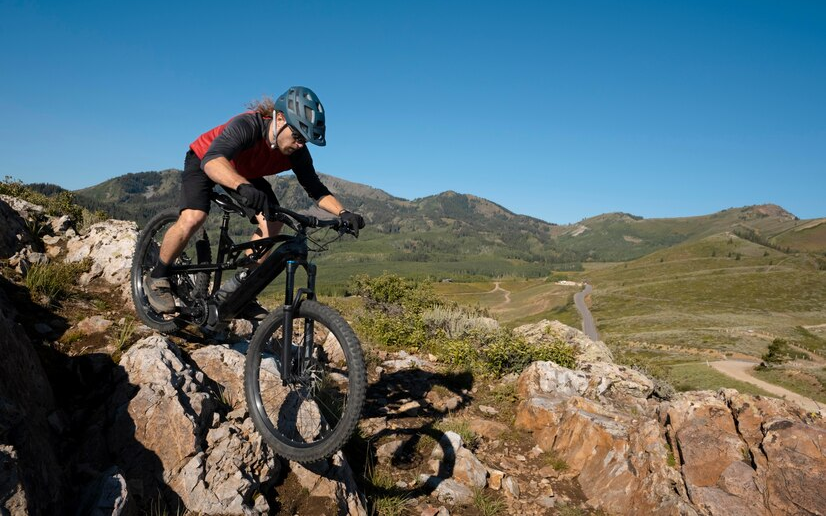
Additionally, consider the bike’s geometry, which affects handling and comfort, and ensure the size fits your body to prevent strain. Gearing systems are essential for navigating varied terrain, and quality brakes, such as hydraulic disc brakes, provide reliable stopping power.
Lastly, the bike’s components for longevity, ease of maintenance, and the manufacturer’s reputation for quality and service should be assessed.
Conclusion
Choosing a bike that aligns with your lifestyle and cycling aspirations is a journey worth undertaking. Reflect on the key considerations: frame material, size, fit, and wheel size for optimal comfort and performance—factor in the suspension, gearing, and brakes to suit your terrain and riding style.
Whether you’re a city commuter, a trail enthusiast, or seeking fitness, there’s a bicycle out there for you. Now that you have learned how to choose a bike, visit your local bike shop or an online retailer and select the bicycle that will enhance your cycling experience.
FAQs
Hybrid bikes are ideal for daily use, offering comfort, versatility, and efficiency on various terrains.
Road bikes are recommended for beginners due to their lightweight design and easy handling.
Consider budget-friendly brands, used options, or seasonal sales, prioritizing durability and essential features within your price range.
Common materials for bicycle frames include aluminum, steel, carbon fiber, and titanium, each offering different benefits.



